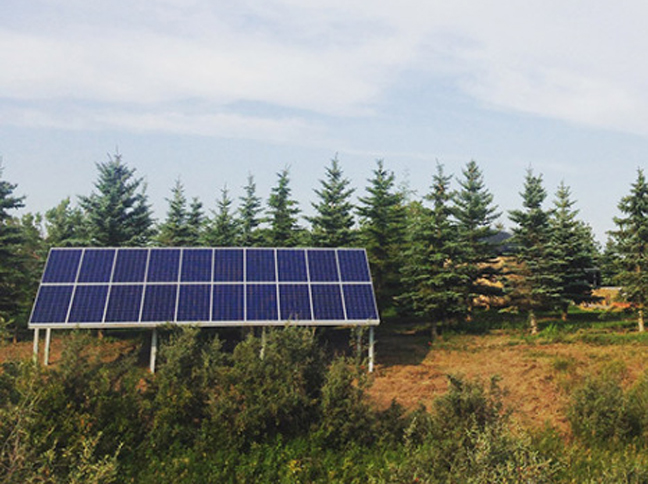
Image Credit: All photos: Kent Earle
Editor’s note: Kent Earle and his wife, Darcie, write a blog called Blue Heron EcoHaus, documenting their journey “from urbanites to ruralites” and the construction of a superinsulated house on the Canadian prairies. Their previous blog on GBA was called Siding and Soffits at the Blue Heron EcoHaus. The blog below was originally published in September 2015. (A complete list of Kent Earle’s GBA blogs is provided in the “Related articles” sidebar below.)
There are seemingly innumerable ways of building a superinsulated home. Once you venture outside the conventional 2×6 walls with 1 or 2 inches of EPS foam, there suddenly opens a plethora of options. Our choice was double-stud wall framing, and what we put inside those walls was just as important as how we constructed them. In our case, we chose to use dense-packed cellulose.
Cellulose insulation is a made from recycled newspaper or other wastepaper and treated with borates for fire and insect protection. Dense-packed cellulose is just what it sounds like: They pack it like crazy into the wall cavity — but not too crazy. In fact, the ideal balance between too loose and too dense is about 3.5 pounds per cubic foot.
If the cellulose is too loose it will settle and result in poor insulation over time. The denser it is the more resistant it is to air leakage (the vapor barrier obviously reduces this further) and the better the insulation. However, beyond about 4 pounds per cubic foot of density you are at risk of blow-outs (or the drywallers will not be able to work with your crazy wavy walls).
At 3.5 pounds per cubic foot and with 16-inch-thick walls, our R-value is a whopping R-56 for the exterior above-grade walls!
Three tons of cellulose in the walls
We hired a company, Westcan Insulators Inc., which has extensive experience with superinsulated homes and a wealth of knowledge in energy efficiency. At our preliminary meetings they provided us with a great deal of valuable information. (Have preliminary meetings with all trades presents — it truly is invaluable.)
It was so reassuring to have them on board, because when building an energy-efficient home, the insulation and airtightness are really the most important aspects. If you don’t have these right, you really don’t have anything.

As Rob Dumont said: “Anything that has moving parts will fail; in fact, it must fail, because there is no such thing as a perfect bearing.” Therefore, passive systems are always better than active systems. Insulation and air sealing, if done well, will have the greatest return (for the lowest cost) over the lifetime of the building.
So here’s how the process worked:
On day one, the crew came in and wrapped the walls with InsulWeb, a mesh that holds the cellulose in place while it is being installed. They go through a buttload of staples to hold the InsulWeb to the studs. They have to put a staple every inch along every stud, so you can imagine how many staples that would be. Crazy.
The next day, they bring out a big, 5-ton truck and using a 3-inch wide metal hose they make a hole at one-third and two-thirds of the way up each stud bay. They then essentially fill the walls with the entirety of the truck. In actual fact, they unloaded about 6,000 pounds of insulation into the walls alone. (Holy crap!)
Next, air-sealing and a vapor barrier
The next day came the vapor barrier and air sealing. This actually took the better part of five days to complete, but they did an excellent job (by the looks of it — we will really find out when we test it with a blower door in the next few weeks).
Airtightness is just as important as the insulation — perhaps even more so. Air leaking into and out of a building is not efficient no matter how much insulation you have in the walls. They used 6-mil poly for the vapor barrier with acoustic sealant at every seam.

Each seam was also taped to ensure another layer of protection, though truthfully this is probably unnecessary — from what we have been told, with this insulation alone, without the vapor barrier, the house would surely pass the R2000 airtightness requirement of 1.5 air changes per hour at 50 pascals — but taping the seams is not hard to do, and once the drywall is up you can’t go back and add tape.
Around the windows and doors, though, we spent a bit of money and purchased Tescon Profil tape from 475 High Performance Building Supply. The stuff runs $45 per roll, which is certainly a premium price compared to the $9 per roll for good ol’ tuck tape (housewrap tape), which we used to seal all other seams. However, between the walls and the windows/doors, there isn’t the layer of protection of the dense-packed cellulose insulation (although they did spray foam around each window and the rough opening). We felt the extra cost was justified here. (To do the whole house in the Tescon Profil tape would simply be cost-prohibitive. For the marginal gains you might make in airtightness, you would never save enough money on the long-term to justify that huge upfront cost, in my humble opinion.)
Renewable energy is the future
It wasn’t enough for us simply to reduce our carbon footprint by building a superinsulated eco-house. We wanted to come as close to eliminating our footprint completely as possible by working toward a net-zero standard.
The house envelope, airtightness, passive solar design, and thermal mass of the house would all have the effect of reducing our energy consumption by 75% to 80%. The rest of our energy for heating, domestic hot water, and appliances was purely electric, with the exception of our wood-burning stove. We have no natural gas to our property — and to be honest, even if we did, we would not have hooked it up. Fossil fuels, though currently affordable, are not a clean energy source; nor are they sustainable.
Still, despite what some people say, electricity — at least in Saskatchewan — is neither sustainable nor clean. Our electricity comes from a power plant that uses a combination of coal and natural gas. Really, in one of the windiest and sunniest places in the world, you’d think we should be able to have some capacity to use renewable energy sources. Unfortunately, this is often a top-down decision by the government, and sadly, both our provincial and federal governments are heavily financed through their strong ties to the oil and gas industries in this country (no matter how much of a downturn there has been in the markets over the past year), and there is no sign of this changing anytime soon.
Until such time as the collective elites decide to shift away from non-renewables, it will continue to be left to the grassroots movements and local homeowners to decide if they care enough to make a commitment to renewable energy — despite the upfront costs of doing so.
Solar makes economic sense, too
But times are changing. The decision to choose renewables is no longer purely based on environmentalism. Now it’s possible to make an economic argument in favor of renewable energy. Let me present this in layman’s terms (as I am, of course, a layman myself).
Our projections for electrical energy consumption:
Estimated yearly energy use (domestic hot water, appliances, heating) = 14,508 kWh (including regular wood stove use for heat).
Cost per kWh hour of electricity in Saskatchewan = $0.1456.
Our projected electrical costs per year = 14,508 x 0.1456 = $2,112 per year or $176 per month.
We worked with a company in Saskatoon called MiEnergy to choose which solar electric system would best suit our needs. We decided to purchase a 6.2-kW PV array. There was an option of upgrading to a 9.3-kW system, but we felt that this would definitely be oversized for us at this point. The 6.2-kW system will be slightly undersized, but we can always add on more panels at a later date if we so choose.
On average, the 6.2-kW system delivers 775 kWh per month = 9,330 kWh per year.
That provides us an immediate saving of $1,358 per year ($113 per month) in energy costs. Extended over 25 years, this delivers $33,961 in electrical savings at the current electrical rates. (I found an interesting article on the energy outlook in the U.S. showing that there has been a $0.04 cent rise per kWh from 2003 to 2013. Extrapolating that, conservatively, over the next 25 years we should expect an upwards $0.08-0.10 rise per kWh. That means that we might be charged at a rate of between $0.22-0.24 per kWh in 25 years. The projection from MiEnergy pegs the 30-year savings attributable to our PV system at $58,067.)
If you take the cost of the PV panels and roll this into a 25-year mortgage at a current 3.19% interest, this only costs a meager $110/month. So essentially instead of giving $113 per month (currently — the amount will increase) to the government to cover our extra electrical bill, we will invest $110 per month toward the PV panels on our mortgage. After 25 years, they panels are paid for and we have money in our pocket (not to mention the fact that we’ve saved 233,250 kWh of energy from being generated at a polluting power plant). That’s a win for us and for Mother Nature.
Mind where you dig
The photo of the PV array at the top of this page is the “after” shot — after I received the phone call at 6:00 p.m. on a Friday night from Saskpower (the electrical company) asking why a large steel post had been driven directly through their power line.
“Uh… I don’t know.”
You see, there is this thing called “Call Before You Dig.” It’s a free service that most places have that asks that you please call them to mark your underground power and gas lines before digging so that you don’t kill, maim, electrocute, or otherwise dismember yourself. Unfortunately, as we learned that night, it is not a perfect service.
The solar company had called and had the power line (note the singular word: line) marked a couple of days before the planned installation. Unfortunately, there were, in fact, two power lines running into our transformer: one from our neighbor’s place to ours and the other running from ours to about 60 houses over the next number of miles. Well, you guessed it: they hit the one running to the 60 houses — the one that was not marked — knocking out their power for the next eight hours. Oopsy.
When I showed up at the house, I could see the one line that was marked — the solar racking system was 4 to 5 feet away — and then I saw where they had discovered the second line (not previously marked) directly underneath the second row of the PV rack.
The Saskpower guys, though, were very good. They realized it was not the fault of the solar company, nor mine; the line simply had not been marked by the “Call Before You Dig” people. The utility workers were just glad that no one had been hurt. They were able to restore power to the 60-odd houses that had been affected, and the next day they were back out to splice and move our newly rediscovered power line.
(Incidentally, this was a total blessing. Had they actually marked both power lines previously, we would not have been able to put the solar panels where we wanted them. We would have been forced to find another less ideal spot, a much greater distance away.)
Weekly Newsletter
Get building science and energy efficiency advice, plus special offers, in your inbox.





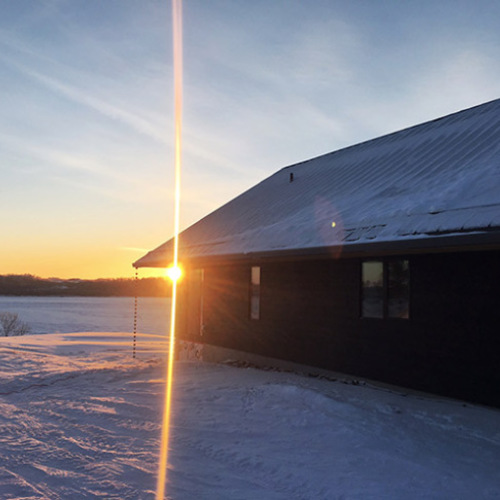
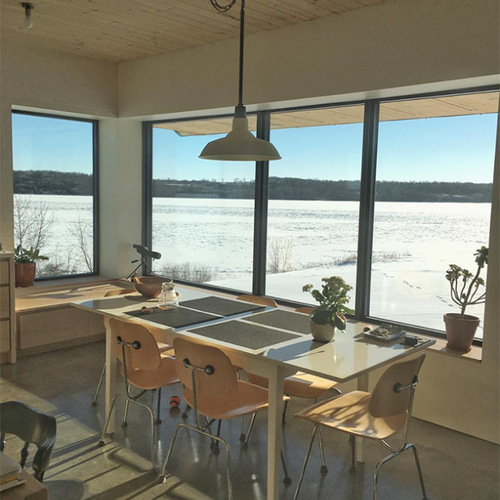
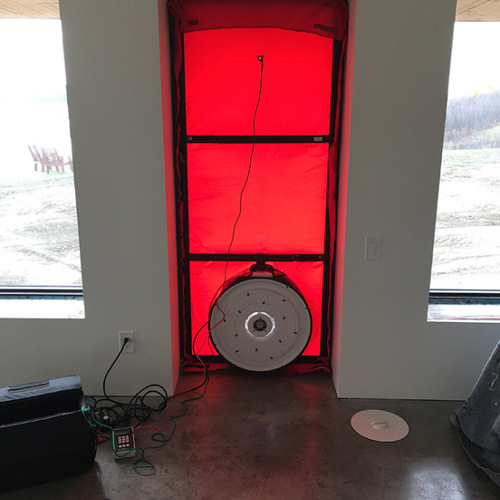
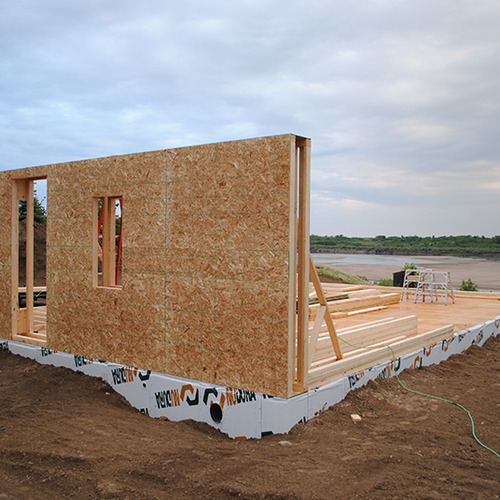






5 Comments
price per watt
So am I correct that the price of PV install was about $5 watt?
I'd assummed Canadian
I'd assummed Canadian dollars.
RE: price per watt
I believe it worked out to about $3.80 per watt in Canadian dollars. We do also receive at 20% rebate for solar installation through the Saskatchewan government, so this is factored into my calculations above.
PV payback
So at bottom line with rebate...$3.04 watt. Total about 6200 x 3.04 = $18,848. So approx 14 year payback, or 16 years with interest at 3%. Pretty good.
Re: PV payback
Close, but the $3.80 is including the 20% rebate. So 6200 x $3.80 = $23,560 our cost in CAN$ (current US$ rate would be $17,670).
Log in or create an account to post a comment.
Sign up Log in